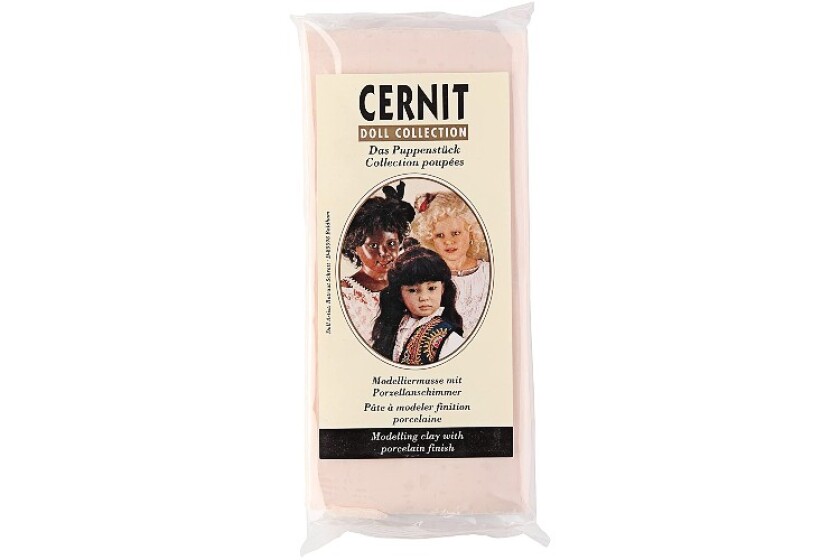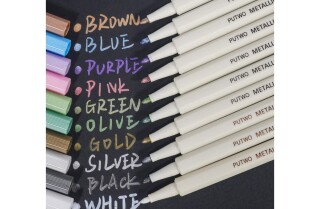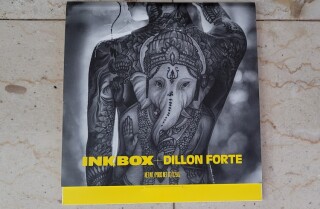Sculpt and Model with the Best Clays
-
Kato Poly Clay -
Cernit Modelling Clay -
Polyform Sculpey III Polymer Clay -
Sculpture House Roma Plastilina Clay -
Van Aken Plastilina Modeling Clay -
Amaco Versa Clay -
Laguna WC-606, #50 Clay -
Standard Ceramics #240 White Clay -
Aardvark Clays Coleman Porcelain -
Activa La Doll Premier Air Dry Clay -
Creative Paperclay for Modeling Compound -
Apoxie Sculpt -
AMACO Mexican Self-Hardening Clay -
Buyer's Guide
Despite the generic term, clay can be made from highly diverse materials. Polymer clay, for example, is a compound that remains soft and malleable until oven-dried while plasticine compounds are a clay-like material used extensively in models for stop-gap animation since they’ll never dry out. Even traditional clay is often formed from different types of material to create the ideal texture or to improve its strength.
Whether you’re creating models, throwing vases, or looking for basic clay for your children, this list of the best clays in 2022 will show you where to start. Be sure to check out our buyer’s guide, provided below, if you need help with your purchase.
Comparing the Best Clays for 2022
Kato Poly Clay - Best Clay Overall
While polymer clays are sometimes associated with children’s craft projects or younger students, Kato Polyclay is a professional artist’s brand, created specifically for art projects. This clay is known for its strength and durability after it’s been cured as well as retaining color during the baking. It has a firmer feel than most other brands and receives good ratings for holding its shape extremely well. Kato Polyclay comes in 21 basic colors, several concentrates for mixing with other clays and translucent versions for mixing with other colors to add depth perception. The brand’s website offers a helpful chart detailing how to mix colors to create any possible shade an artist could want.
Cernit Modelling Clay - Runner Up
Cernit Clay is one of the strongest polymer clays available making it a popular choice among artists for making dolls, masks or other projects requiring a skin tone. This polymer clay has a clear, translucent finish, and available in a range of 70 colors including primary colors, flesh tones, metallic, and neon shades. This brand takes a fair amount of conditioning to make it soft enough to use but once ready, it’s well worth the time investment. Cernit Modeling Clay is manufactured in Belgium but since the current US distributor is dropping this product line it might be a little harder to find in stores. However, it’s still available online and well worth the effort to obtain.
Polyform Sculpey III Polymer Clay - Honorable Mention
Sculpey III was created as a basic modeling clay for children to use with an extra soft feel and a wide color palette. While original Sculpey is available in large bricks with only two colors, Sculpey III come in smaller packages in almost 30 colors. This clay is fairly soft compared with the other Sculpey brands and well suited for modeling projects, though it may not work well for detail-oriented work; it’s also not the best choice for color consistency or for projects requiring strong clay.
Sculpture House Roma Plastilina Clay - Consider
Sculpture House Roma Plastilina is formulated with quality and reliability in mind. The clay is white to gray-green, available in four consistencies ranging from soft to extra-hard in packages weighing from 4 to 50 pounds. This soft clay is intended for large sculptures while harder varieties are for smaller projects or making models. Plastilina is not intended for permanent projects so it should be reserved for models rather than professional art projects. It’s also one of the most expensive brands, but many sculptors consider the quality worth the price.
Van Aken Plastilina Modeling Clay - Best Sculpting Clay
Van Aken Plastilina Modeling Clay is a good choice for clay animations or general sculpting and holds small details well. Designed to keep its pliability, this oil-based clay can be reused multiple times without drying out or becoming brittle. This clay can be shaped by hand or manipulated using crafting tools. Available in either 1-pound or 4.5-pound bricks, this clay has a palette of 28 colors ranging from pastels to bright neon shades. The clay is moderately expensive but still very reasonable for high-quality modeling clay.
Amaco Versa Clay - Best Clay for Pottery
Amazos Versa Clay No. 20 is one of the brand's most versatile options. Easy to work with, this clay is gray when moist but fires to a light, even-white. This clay stays moist for a long time in storage and has a wide firing range of Cone 4 to Cone 5. The color of the bisque ranges from white to cream depending on how it’s fired.
Amaco Versa Clay can be used for a wide range of techniques from hand building to wheel throwing. Great for extra-thin projects, it’s available in reasonably priced bulk packages and widely obtainable so even a local dealer is likely to stocks this clay.

Laguna WC-606, #50 Clay - Best Clay for Pottery
This clay from Laguna is recommended for Cone 6 firing and works well for wheel throwing. The fired clay has a sandy color with a fine speckled texture which will show through the glaze and it’s a favorite among pottery artists looking for a stoneware look and feel. Laguna is one of the more common clay manufacturers with dozens of clays from both California and Ohio.
The company's catalogue offers comprehensive clay lists arranged by usage, source, and firing range. Laguna also offers sample kits of various types and colors of clays, so you can test several varieties at once and find the most suitable clay for a project.

Standard Ceramics #240 White Clay - Best Clay for Pottery
Standard Ceramics (also known as Standard Clay) is a well-known distributor stocking dozens of clay types but this is one of the brand's better options for wheel throwing. This particular product is white stoneware clay with a high plasticity. It’s a high-fire clay body meant to be fired at Cone 6 and includes a fire clay blend to improve the overall texture.
Like other high fire clays, it has a high shrinkage rate so you’ll need to adjust to avoid damage during the drying or firing process. The company's distributors are limited to the eastern United States and a few international suppliers so this particular clay may be more difficult to find.

Aardvark Clays Coleman Porcelain - Best Clay for Pottery
This is high-quality pottery clay created by well-known pottery artist Tom Coleman. This clay type is a grolleg, a blend of English china clays and it has a very low absorption rate making it a good choice for tableware. Unlike many other types of clay, it’s a good choice for large pieces and holds up well when thrown thin. The clay is white with a translucent look after it’s been fired; recommended for Cone 10, but can be used for Cone 8 through 11.
Aardvark Clay is a fairly popular brand with a fairly widespread distribution network though it can be harder to find an online source. The only real drawback to this clay is its fairly high price but for non-specialized projects, Aardvark offers a range of good clays at lower prices.
Activa La Doll Premier Air Dry Clay - Best Air Drying Clay
Activa is known for its La Doll clay, a premium air-drying clay used by sculptors for making dolls and figurines. This clay has a slightly firmer non-stick formula making it a great choice for creating fine, detailed projects. The clay can be kept moist for a long time if handled properly but once dry it’s very strong and light, with a white finish for easy painting. La Doll Premier Air Dry Clay also molds well around wire mesh, styrofoam, paper, and other materials sculptors use to construct a core.
Creative Paperclay for Modeling Compound - Best Air Drying Clay
Although Creative Paperclay is not technically a clay, it behaves like it with a moist, pliable texture and durable finish once dry. This air-drying clay alternative is easy to keep moist until a project is finished. This paperclay comes in only white but sculptors can add water-based paints to the moist clay as well as decorating with any medium after drying. It’s available in packages from four ounces up to one pound and priced fair when compared with similar specialty clays. Unlike some other budget-priced counterparts, Creative Paperclay is made with all natural ingredients and has no smell.
Apoxie Sculpt - Best Air Drying Clay
Apoxie Sculpt offers an air-drying epoxy-type material with properties similar to clay. The Apoxie Sculpt comes in two separate containers which are mixed to get a smooth, putty-like sculpting medium. Sculptors will need to work quickly since the material has a working time of 2-3 hours once mixed and cures completely in 24 hours. Apoxie Sculpt can be used to create models, repair broken projects and it adheres to a variety of materials with no shrinkage. Once dry, Apoxie Sculpt can be sanded, carved or painted like other cured clays. It comes in 12 colors with a good selection of bright or earth tones.
AMACO Mexican Self-Hardening Clay - Best Air Drying Clay
Mexican Pottery Clay is a terra-cotta-style pottery clay which can be used for the pottery wheel, modeling, or sculptures. The clay’s name comes from the color’s similarity to the bright red of Mexican/Indian pottery. Once the project is finished, it can be air-dried to a hard finish with a vivid red color. As with other air-drying clays, sculptors will need to mist this clay or keep it covered with damp cloths while they’re working. Per pound, the clay may be a bit more expensive than similar air-drying clays but comes in 5 and 25-pound packages depending on your needs.
Buyer's Guide
If you ever try to buy clay in an art store, you may find yourself overwhelmed by the options. Traditional clay is earth-based, while polymer clay and plasticine are synthetic compounds. Even traditional clay is often formed from different types of material to create the ideal texture or to improve its strength, and there are all the other little details to figure out: firm, soft, tooth, clay-body, air-drying, ceramic, low-firing, and so on. Even knowing what these categories may be, it can still be hard to know what to buy. That's why we're here with suggestions for finding the best brands of air-drying clay, polymer clay, sculpting clay, and pottery clay.
Clay Body
The term clay body describes how the clay itself feels and acts. Some clay is firmer, making it a good choice for large, upright projects. Some clay has a very smooth grit and is ideal for using on a wheel while other clay is rougher, with a sandy grit which might make the clay great for modeling projects or sculptures. Even when you’re looking at a specific category of clay such as pottery clay, be sure to check the description of the material to make sure it has a suitable clay body.
Grog
Clay often has a gritty material called “grog” added to it. Because clay is a very dense material, the porous grog stabilizes it, making the clay easier to work with. Clay with heavy grog shrinks less when it’s drying, but can also be gritty and should not be used on a pottery wheel.
Cone
This only applies to clay you plan to fire in a kiln. The cone can refer either to the general temperature at which clay is fired or to specific types of clay, designating the range of temperatures the clay can be fired. Roughly speaking, the overall range of temperatures can be broken into low-firing (earthenware, around cone 6), mid-firing (stoneware, about cone 5), and high-firing (porcelain, cone 10, and above).
Clay Types
Air-Drying Clay
For beginning potters, this type of clay is a good, basic choice. It takes much less equipment and a lower learning curve than regular pottery clay since you don’t need a kiln to fire the clay. You may still need to experiment with it though since any clay can crack during drying if it isn’t shaped or handled correctly.
Polymer Clay
This is a synthetic formula created to act just like clay. The softer brands are a great choice for kids to play with since polymer won’t dry out like regular clay. Firmer clay tends to work best for professionals, though, since it holds its shape better. Either type can be cured in an oven.
Plasticine
Like polymer clay, plasticine is synthetic clay. Unlike other clay or polymer clay, however, this clay type is oil-based so it doesn’t dry out but it definitely can’t be fired. Because it’s a permanently soft mixture, it’s a great choice for kids to play with and popular for making clay figures featured in stop-motion animations thanks to its malleability.
Ceramic Clay
This is the traditional clay widely used for pottery as well as industrial models. It can be kiln-fired using a variety of glazes, although some clays are valued for their own natural coloring; in fact, earthenware and porcelain are two of the most common ceramic clays in pottery. Be sure to check both the color of the fired clay and the type and consistency of the grog before deciding on a clay.
Sculpting Clay
Sculpting clay is a broader category of clay that can be either traditional or synthetic. It tends to have a coarse grain as opposed to other pottery clay, but in reality, you can use any clay that will work well with your sculpting methods. For large sculptures, you’ll want to look for a sturdy clay, while slow-drying clays will work better for you if you plan to build your project slowly over several days or even weeks.
Paper Clay
Paper clay is made by adding cellulose fibers to a basic clay compound. Like grog, the fiber tends to absorb water better and can make the final product stronger. Paper clay requires more care when working with it, especially when it’s being thrown on a pottery wheel.





























